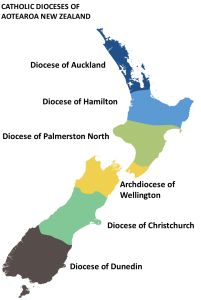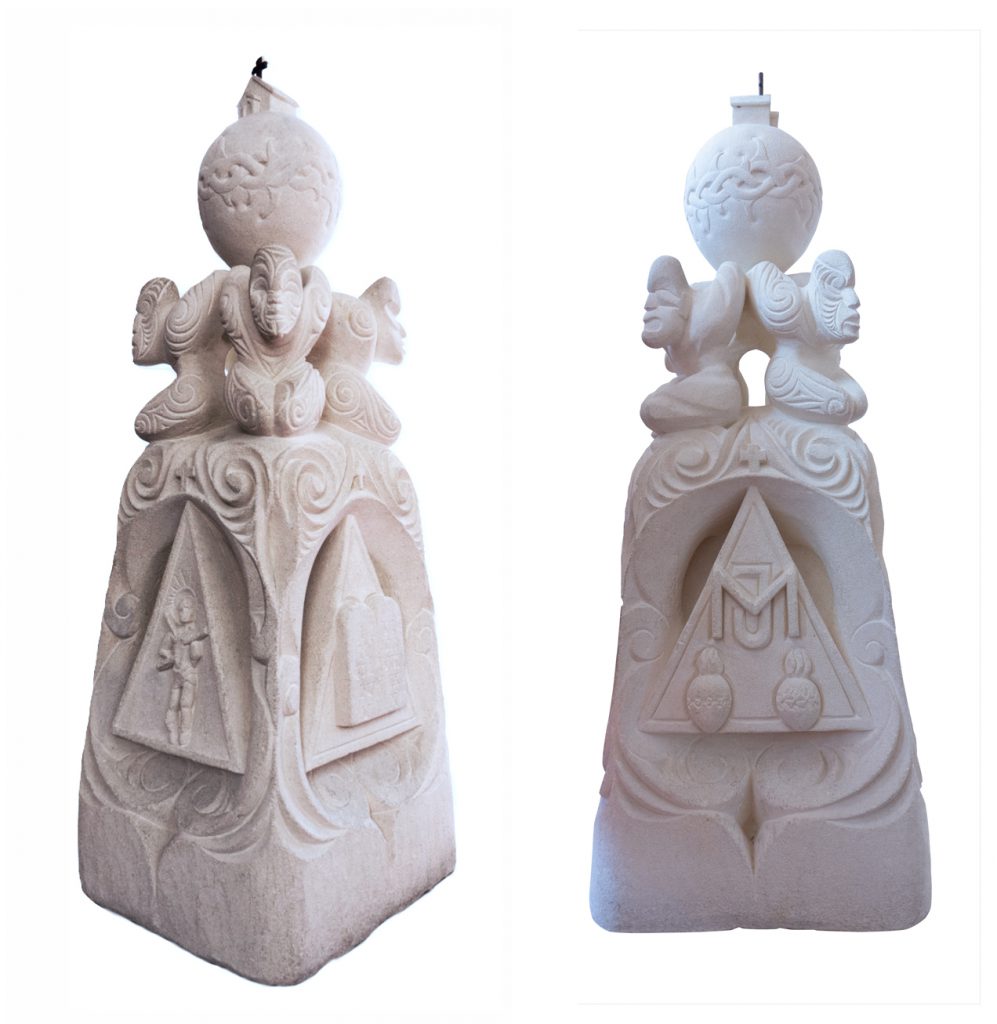The Archdiocese of Wellington
The Archdiocese of Wellington was established in June 1848 by Pope Pius IX, who divided New Zealand into two dioceses, Auckland and Wellington. There are now six dioceses in New Zealand.
The boundaries of the Roman Catholic Archdiocese of Wellington are:
“Firstly, all that area of the North Island more or less bounded by a line commencing on the western most point of the southern boundary of the Palmerston North Diocese, thence following that boundary generally to the mean high water mark on the east sea coast and following that mean high water mark south westerly to Cape Palliser, generally north westerly to Cape Terawhiti, and north easterly to the point of commencement and including all adjacent habitable land.
Secondly, all that area of the South Island more or less bounded by a line commencing at a point on the middle line of the Conway River in line with the high water mark of the sea coast and proceeding generally north westerly up the middle of the Conway River following the north boundary of the Cheviot County as described in Gazette 1930 page 2014 to and along the north eastern boundary of the
Amuri County as described in Gazette 1960 page 989; thence generally westerly along this boundary to the middle of the mouth of the Punakaiki River, thence to and along the mean high water mark of the sea coast following inlets, bays harbours and peninsulas around the northern portion of the South Island to the point of commencement and including all habitable adjacent islands. Total area 35,800sq km.”
Certified 11 February 1981 under the Roman Catholic Lands Act 1876

Kohatu whakairo

In 1989 the Catholic Māori of the Archdiocese of Wellington gifted a kohatu whakairo to the Archdiocese.
The kohatu whakairo or “thinking stone” is 2 metres high and made of Oamaru stone. It normally sits in the foyer of Sacred Heart Cathedral which is currently closed for earthquake strengthening. It is one of the Cathedral’s taonga.
The kohatu whakairo was carved by Lou Kereopa, master carver from Porirua.
The kohato whakairo consists of layers and panels, each with its own uniqueness. The solid base represents the Catholic faith. In the first layer above the base the essentials of that faith are represented in the panels on three of the four sides of the stone – the seven sacraments, the Ten Commandments, the crucified Saviour within the Holy Trinity.
The fourth panel represents the cathedral itself with the initials J and M for Jesus and Mary, and two hearts to represent the Sacred Heart of Jesus and the Immaculate Heart of Mary.
On the next layer the panels have four figures representing the growth in faith from none to the full believing Christian, whose face has a full moko. Together these four figures support the suffering world over which stands the church bearing Christ’s light to the nations.
This light is represented by a globe which is the world encircled by a crown of thorns representing human suffering and disobedience, and the sacrifice of Jesus who gave his life that human beings may live and have eternal life.
The structure is crowned by a church portraying the shelter and joyful hope that the gospel offers. The cross surmounting the kohatu whakairo symbolises all who follow the way of Jesus.